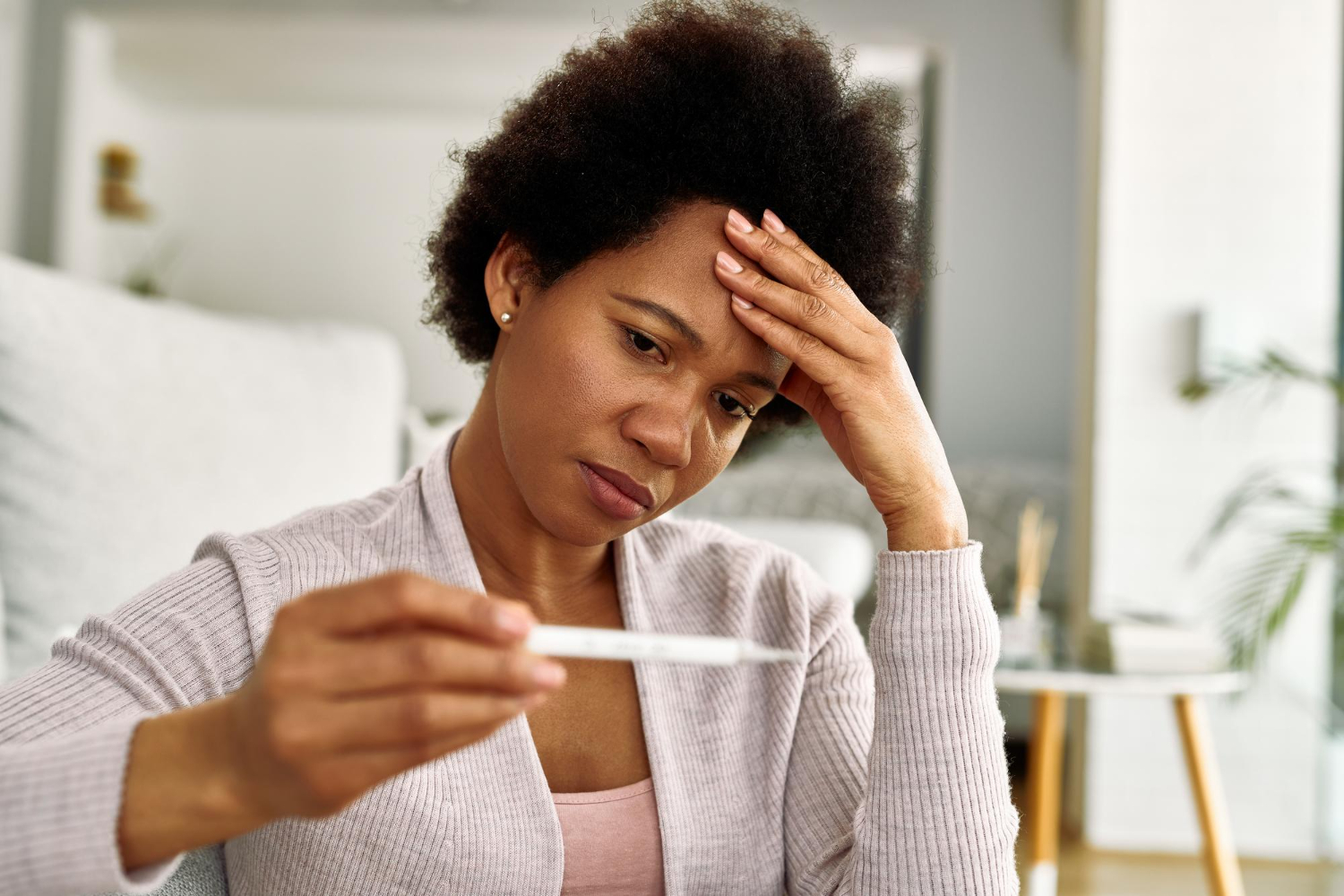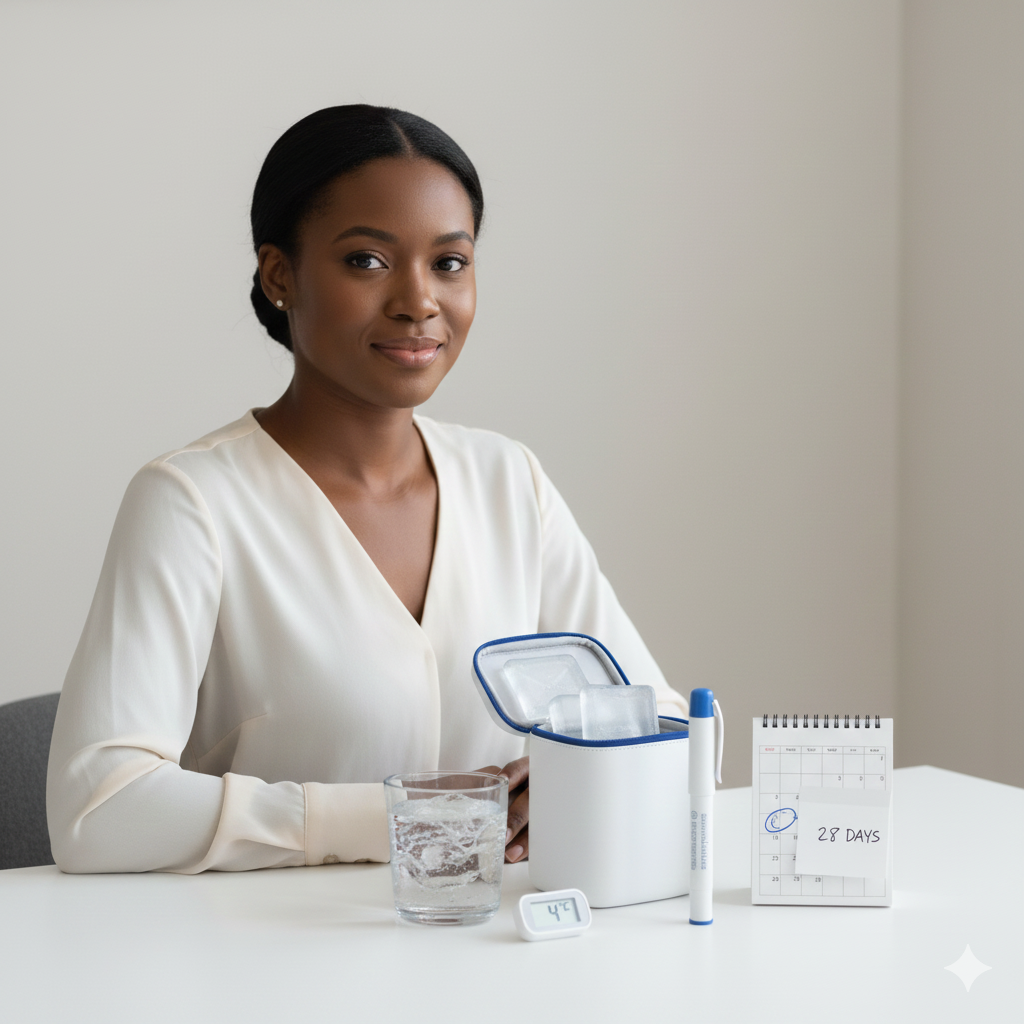Perimenopause is the transition before menopause when hormone levels begin to shift. These changes can bring irregular periods, hot flashes, sleep problems, and mood changes. Many women wonder if a blood test for perimenopause can provide answers. Testing can sometimes help, but it isn’t always required.
Perimenopause can feel confusing because symptoms may appear suddenly and vary in intensity from month to month. Some women turn to testing for reassurance or to rule out other medical conditions, while others rely on symptoms alone. This guide explains when testing is useful, which perimenopause labs matter most, the best time in your cycle to check hormone levels, and how to interpret results. For a full overview of the transition, see our article on perimenopause stages, symptoms, and treatment.
Key takeaways
- Hormone levels such as FSH and estradiol fluctuate widely during perimenopause, and a single test may not reflect the full picture, as confirmed by the SWAN study.
- For women over 45, diagnosis is usually based on symptoms and cycle history rather than routine blood work, according to NAMS and NICE.
- Timing matters. FSH and estradiol are typically tested on cycle days 2 to 4, while progesterone is best measured about a week after ovulation.
- Effective treatment does not always require testing. Hormone therapy is proven to relieve hot flashes, night sweats, and other vasomotor symptoms.
What happens to hormone levels in perimenopause
Perimenopause is driven by changes in the ovaries. As ovarian function begins to decline, estrogen and progesterone rise and fall unpredictably. Some cycles still produce eggs and normal hormones, while others do not. This irregular activity leads to shifting hormone levels that can explain many common symptoms, including:
- Irregular or skipped periods
- Hot flashes or night sweats
- Sleep problems
- Mood swings or anxiety
- Changes in sex drive
- Weight changes
The Study of Women’s Health Across the Nation confirmed that estradiol levels can vary widely from cycle to cycle, which explains why symptoms often feel unpredictable. For more on mood and hormones, see our guide on how hormonal shifts affect mood swings.
Do you always need testing?
Not necessarily.
- Over 45 with typical symptoms: Most guidelines, including NICE and the North American Menopause Society, recommend diagnosis based on symptoms and history rather than routine testing.
- Under 45 with unusual patterns: Testing may be useful to rule out thyroid disease, high prolactin, or pregnancy.
- Premature ovarian insufficiency: The American College of Obstetricians and Gynecologists advises repeating FSH and estradiol tests to confirm the diagnosis.
- Contraception decisions: In some cases, FSH testing helps determine when it’s safe to stop certain contraceptives.
For example, a 47-year-old woman with irregular cycles and hot flashes usually does not need testing, while a 38-year-old with the same symptoms may benefit from hormone labs to exclude other conditions.
Which hormones are tested
Common perimenopause labs include:
- FSH (Follicle Stimulating Hormone): Rises as ovarian function declines, though levels can swing daily. Research shows a single test may mislead.
- Estradiol (E2): Can be high one day and low the next.
- Progesterone: Measured in the second half of the cycle to confirm ovulation (ASRM guidance).
- LH (Luteinizing Hormone): Sometimes paired with FSH, but less helpful alone.
- AMH (Anti-Müllerian Hormone): Not recommended for diagnosing perimenopause after age 45.
Other possible tests include thyroid function, prolactin, pregnancy, or blood count if bleeding is heavy.
Best time to test
The timing of tests makes results more reliable:
- FSH and Estradiol: Best measured early in the cycle, usually days 2 to 4, as recommended by WHO.
- Progesterone: Should be measured about seven days after ovulation. Day 21 only applies if your cycle is exactly 28 days.
- Prolactin: Best checked in the morning because stress and exercise can raise levels.
- Fasting: Not usually required, though avoiding heavy stress or intense exercise before testing can make results clearer.
Making sense of results
A single test rarely confirms perimenopause. Results should always be considered alongside age, cycle history, and symptoms. FSH and estradiol can change dramatically from one month to the next, which means a normal result does not rule out perimenopause..
At-home vs lab testing
- Lab blood tests: Accurate for that specific moment and useful for ruling out thyroid disease or other conditions, though they capture only a snapshot in time.
- At-home kits: Often measure urine or saliva over several days. A 2022 review found they can help track patterns but are not reliable for diagnosing perimenopause on their own.
Managing symptoms without blood tests
You don’t always need labs to start treatment. Hormone therapy is the most effective option for hot flashes and night sweats. Non-hormonal approaches, such as lifestyle adjustments and certain medications, can also help.
If you’re considering treatment, explore our guide on hormone pellet therapy or supplements like DIM, which may support estrogen balance.
When to see a doctor
Seek medical care if you have:
- Very heavy bleeding or bleeding after menopause
- Severe headaches or new vision changes
- Nipple discharge not related to breastfeeding.
- Symptoms of thyroid disease
- Possible pregnancy despite irregular cycles
While most perimenopause symptoms are common and manageable, these signs may point to other medical issues that need further investigation.
Next steps
Hormone testing during perimenopause can sometimes provide clarity, but it is not always necessary for diagnosis or treatment. For many women, tracking symptoms, cycle changes, and overall health gives doctors enough information to guide care. If you are under 45 or have unusual symptoms, your provider may suggest blood tests to rule out other conditions.
The next step is to talk with a healthcare professional about your individual situation. Together, you can decide whether testing is helpful, explore treatment options, and discuss lifestyle changes that may ease symptoms. The goal is to find an approach that supports your health and comfort as your body transitions toward menopause.









